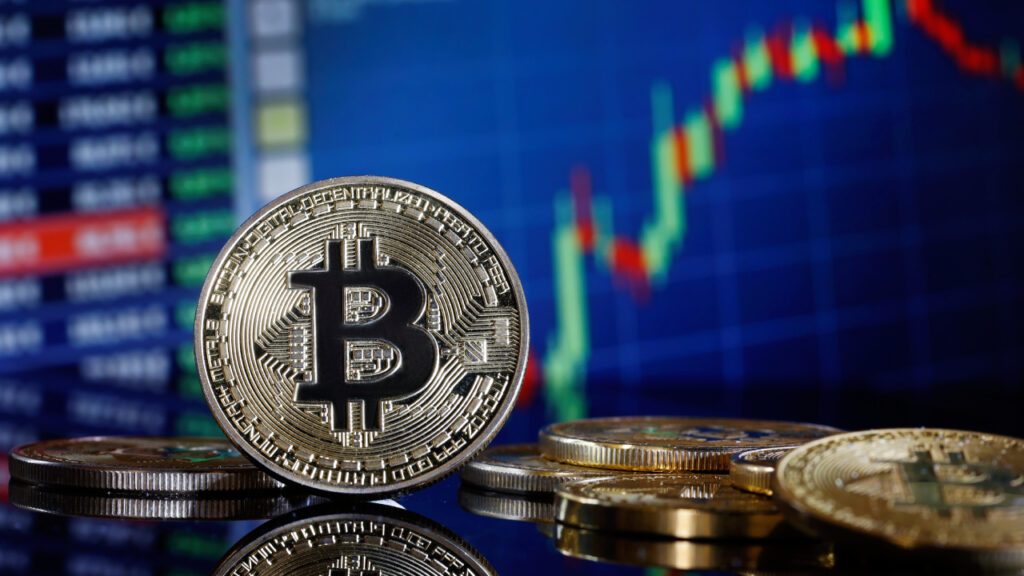Our writers and editors used an internal natural language generation platform to assist with portions of this article, allowing them to focus on adding information that’s particularly useful. The article was reviewed, fact-checked and edited by our editorial staff before publication.
Bitcoin flirted with a new all-time high on Monday when it reached $67,791.37 at the time of writing, less than $2,000 below its historic peak. The cryptocurrency is in the midst of a rally, rising 18 percent in just one week.
It’s been over two years since the most popular cryptocurrency by market share reached its all-time high of $68,999.99 in November 2023.
The new year was bright for Bitcoin, which rose more than 52 percent since January 1, when it closed at $44,167.33.
Experts point to a recent event – the adoption of Bitcoin ETFs – and an upcoming event – known as the halving – as the catalyst for Bitcoin’s recent run.
Bitcoin ETFs are driving demand
In January, the U.S. Securities and Exchange Commission approved the adoption of 11 spot Bitcoin ETFs, giving investors a more accessible way to invest in the cryptocurrency.
Big names like BlackRock and Fidelity have seen billions of dollars pour in from both retail and institutional investors looking for a more streamlined way to buy and sell the cryptocurrency. Now investors can do this within their investment portfolios, in addition to stocks and bonds.
“The adoption of spot bitcoin ETFs opened the doors to investments for financial advisors, retirement accounts and other investment accounts,” said Adam Blumberg, co-founder of Interaxis, a company that provides cryptocurrency and blockchain education to financial advisors. “Investors no longer need to create an account with an exchange like Coinbase or Kraken.”
SEC approval also increased potential demand from 401(k) sponsors, companies looking to place an allocation on their balance sheets and other institutions that Blumberg says have been waiting for an official green light from U.S. regulators.
At the same time, the ‘halving’ will reduce the supply of Bitcoin
Another possible cause for Bitcoin’s recent price rise is the impending “halving,” or the cryptocurrency’s intrinsic feature that systematically reduces the inflow of new coins into circulation. Specifically, this is the case when the block reward, or the incentive for miners to process transactions, is halved.
A halving occurs roughly every four years and theoretically drives up the price of Bitcoin due to increased scarcity. The next halving is expected to take place in mid-April.
History shows that halving events typically lead to a notable increase in Bitcoin’s value. Thus, the current rise in Bitcoin’s price is likely driven by investors anticipating the upcoming halving, coupled with the growing acceptance of cryptocurrency by regulators and traditional markets.
“More demand plus lower supply should mean the price goes up,” Blumberg says.
While Bitcoin is enjoying a solid bull run that could eclipse its previous all-time high, it remains a volatile asset. It is not backed by the cash flow of an underlying company the way stocks are, meaning the only thing that sustains Bitcoin’s value is the mood of other traders. The cryptocurrency has been notorious for boom-bust cycles throughout its 15-year history.
“Because Bitcoin isn’t held back by anything fundamental like cash or a company’s profits, Bitcoin is the definition of a sentiment-based trade,” says James Royal, chief investing writer at Bankrate. “As traders swing back and forth between optimism and pessimism, as they have done in recent years, Bitcoin has gone parabolic – in both directions.”


